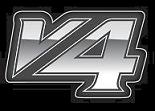
SYSTEM SETUP
PREV: Hardware Installation HOME NEXT: The Master and Point Mixers
|
1. Setting the IP address on your computer
In order for all hardware units in the Stagetracker FX system to connect to your computer, your computer must be set with:
To do this, go to the Windows Control Panel and open "Network Connections". Select the "Local Area Connection" you are using, and find "Internet Protocol (TCP/IP)". Click Properties and type in the numbers. Mac: To do this, go to the System Preferences and open "Network". Select the desired network port, most likely "Ethernet". In the settings, choose Configure "Manually", and enter the IP address and Subnet mask listed above. Router, DNS Server and Search Domains may be left blank. | ||||||
|
2. Adding Tags to the system
When you setup your Stagetracker FX system for the first time, you will need to add your Tags to the system. Note that this is a one-time-only operation.
3. RadioEye setup In the V4 Tracking Engine software, go to Setup -> RadioEye Setup to open the RadioEye setup dialogue box. It is important that the RadioEye setup steps are carried out in the following order.
RadioEye Roll and Pitch and Offset settings may be entered or fine tuned manually if desired. To manually set or fine tune these values, first assign a Tag to a matrix input. The input will now appear on the main tracking screen.
Click OK to exit RadioEye setup dialogue box. Your RadioEye is now setup and ready for use. 4. Setting Global Delays Global Delays allows the user to enter values for the desired Haas precedence effect delay and total inherent system latency. Global Delay values will be applied automatically to all Points on the Tracking Layer. Global Delays are not applied to Points on the Effects Layer. Once entered, Global Delays allow the user to delay speakers manually using only simple physical distance measurements. All distance-time conversions, Haas delay addition and system latency subtraction calculations are carried out automatically by the V4 software. Should equipment having an effect on system latency be added to or removed from the system, the user may enter the new latency value in the Global Delays dialogue box. The V4 Tracking Engine will then adjust all delays accordingly, making it a simple matter to change equipment configurations without affecting the current soundscape. The inherent latency of the Stagetracker FX system is 2.7ms. As the V4 Tracking Engine currently supports only integer system latency values, the default latency value is set to 3ms. By default, Haas precedence is set to 14ms. This may be changed by the user if desired. It should be noted that Global Delay values are always taken into account by the V4 Tracking Engine. Should the user prefer to not have the system take care of these delay values (for example, preferring to delay the system completely by ear), these values should be set to 0. In the V4 Tracking Engine, go to Setup-> Global Delays to open the Global Delays dialogue box. Use the sliders to enter the desired delay values or enter them numerically. 5. Stage dimensions In the V4 Tracking Engine software, go to Setup->Stage Dimensions to open the Stage Dimensions dialogue box. Use the sliders to enter the stage dimensions (width and depth) or enter them numerically. Click OK to exit. |